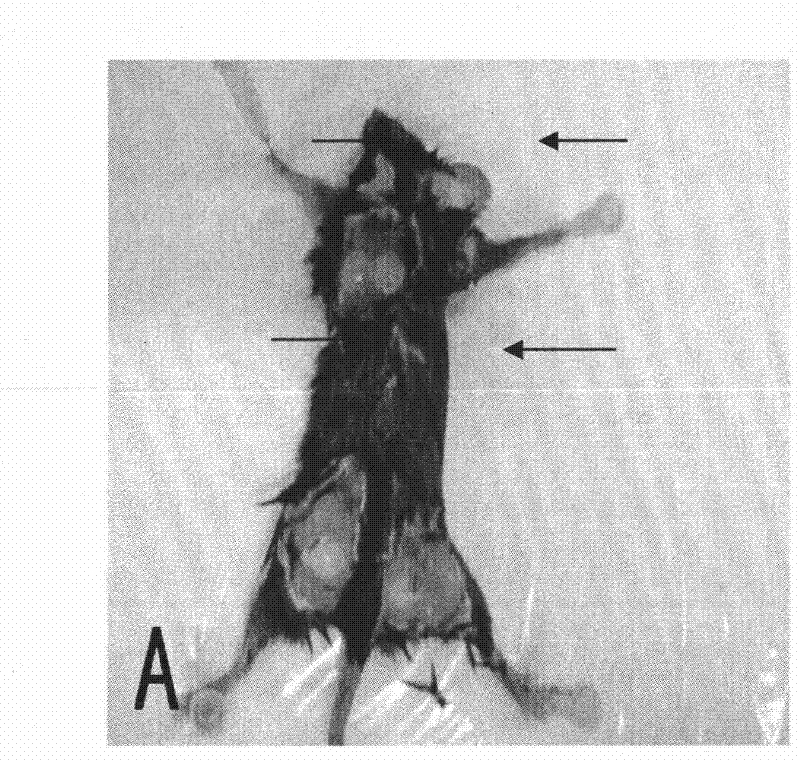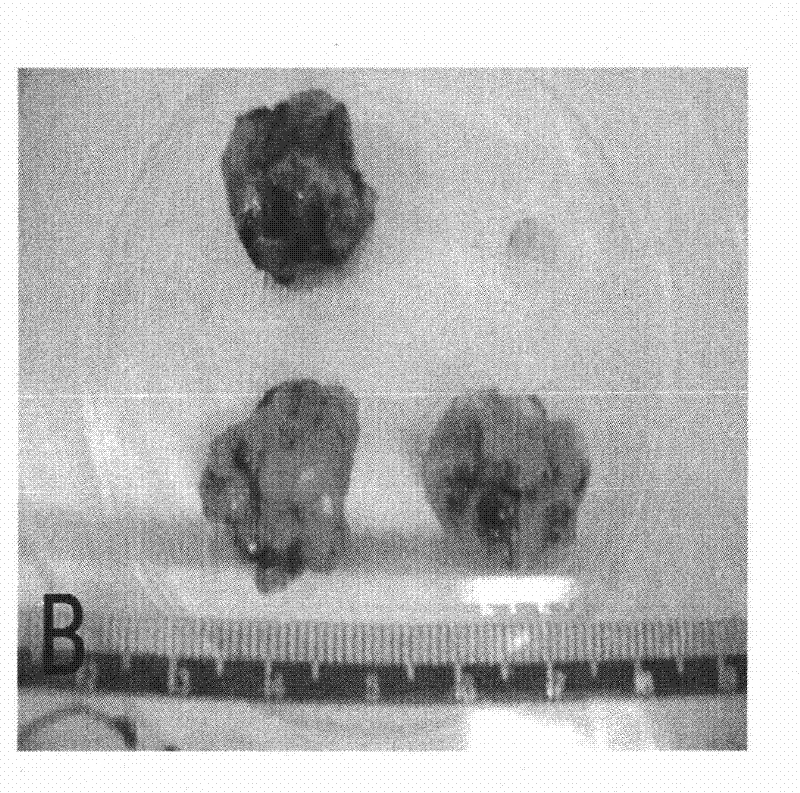Method for establishing mouse transplanting tumor model with normal immunologic function
A method of establishing a method and a technology of immune function, which is applied in the field of transplanted tumor models in mice, and can solve problems other than tumor immunotherapy and immune function deficiency
- Summary
- Abstract
- Description
- Claims
- Application Information
AI Technical Summary
Problems solved by technology
Method used
Image
Examples
Embodiment 1
[0018] The vector expressing Ras mutant gene (see Serrano M, Lin AW, McCurrach ME, Beach D, Lowe SW (1997). Oncogenic ras provokes premature cell senescence associated with accumulation of p53 and p16INK4a. Cell 88: 593-602.) and expression The carrier of the p53 mutant gene (p53S) (see another patent application of the applicant: the establishment method in the patent acceptance number 200910095184.3: the cDNA of the p53 mutant gene is connected into the PQCXIP carrier by conventional genetic engineering methods, so that p53 can be expressed mutant gene) transfected into p53 - / - Mouse embryonic fibroblasts (MEFs) were screened for p53 - / - +S+Ras cell line; transfect the vector carrying the mutant Ras gene and the empty plasmid into p53 - / - MEF cells get p53 - / - +V+Ras cell line.
[0019] 1) p53 - / - +V+Ras and p53 - / - +S+Ras cells were subcultured in vitro by adding DMEM (10% FBS).
[0020] 2) Take 6 dishes of each of the two types of cells, suck off the supernatant, and...
Embodiment 2
[0028] p53 - / - +V+Ras and p53 - / - +S+Ras cells (see the first part of the embodiment: the vector carrying the Ras gene and the empty plasmid transfected into p53 - / - MEF cells get p53 - / - +V+Ras cell line. ) into DMEM (10% FBS) for subculture in vitro; take 6 dishes of each of the two types of cells, suck off the supernatant, add 5ml of PBS to wash once; after trypsinization, add 4ml of medium, collect the cells into a centrifuge tube; centrifuge at 1200rpm for 5min , discard the supernatant; add 7ml DMEM (serum-free), resuspend, take 100μl for cell counting; use DMEM (serum-free) to make 2×10 6 / ml two-cell suspension, take the two-cell suspension and inoculate it subcutaneously on the back of different C57 / BL6 mice. 6 cells. On average, tumors can be observed about 14 to 5 days after inoculation of the two kinds of cells, and an allogenic mouse transplanted tumor model with normal immune function can be obtained.
Embodiment 3
[0030] p53 - / - +V+Ras and p53 - / - +S+Ras cells (see the first part of the embodiment: the vector carrying the Ras gene and the empty plasmid transfected into p53 - / - MEF cells get p53 - / -+V+Ras cell line. ) into DMEM (10% FBS) for subculture in vitro; take 6 dishes of each of the two types of cells, suck off the supernatant, add 5ml of PBS to wash once; after trypsinization, add 4ml of medium, collect the cells into a centrifuge tube; centrifuge at 1200rpm for 5min , discard the supernatant; add 7ml DMEM (serum-free), resuspend, take 100μl for cell counting; use DMEM (serum-free) to make 0.6×10 6 / ml two-cell suspension, take the two-cell suspension and inoculate it subcutaneously on the back of different C57 / BL6 mice. 6 cells. On average, tumors can be observed about 14 to 5 days after inoculation of the two kinds of cells, and an allogenic mouse transplanted tumor model with normal immune function can be obtained.
PUM
 Login to View More
Login to View More Abstract
Description
Claims
Application Information
 Login to View More
Login to View More - R&D
- Intellectual Property
- Life Sciences
- Materials
- Tech Scout
- Unparalleled Data Quality
- Higher Quality Content
- 60% Fewer Hallucinations
Browse by: Latest US Patents, China's latest patents, Technical Efficacy Thesaurus, Application Domain, Technology Topic, Popular Technical Reports.
© 2025 PatSnap. All rights reserved.Legal|Privacy policy|Modern Slavery Act Transparency Statement|Sitemap|About US| Contact US: help@patsnap.com


